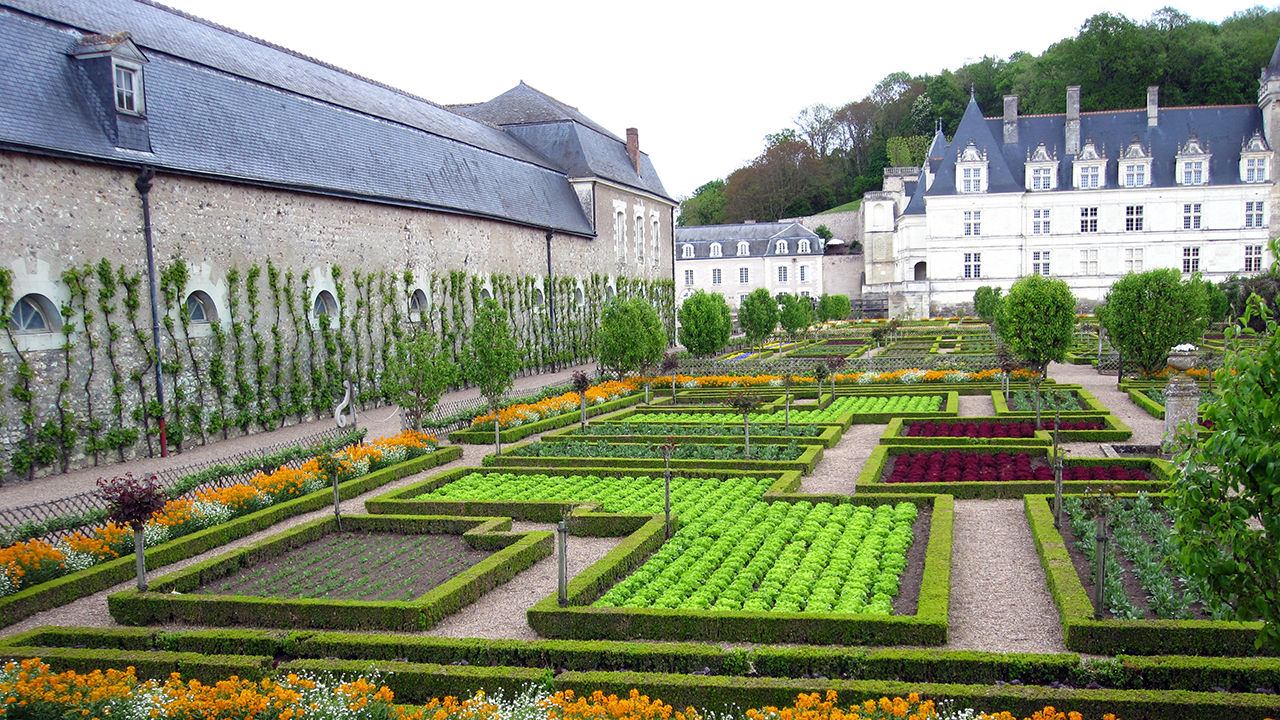Lesson 2 - Design tips from history

Naturally, the very first gardens were those producing food – generally agricultural crops based around domesticated plants. Depending on what part of the world these gardens were located, many different plants were domesticated – be they grains in the Middle East, yams in Africa or corn, millet and potatoes in the Americas. One feature that persists to this day from the ancient gardens is the importance of soil tillage or cultivation, which releases nutrients for the newly domesticated plants.
Diggers tip
Soil cultivation is vital when building a food garden. The act of turning soil loosens the structure of a garden bed to ensure good aeration and soil structure to enable water infiltration, which in turn carries nutrients to your plant's roots.
During the Middle Ages and early medieval period, monastic gardens became widespread, growing food as well as flowers, turf, culinary and medicinal herbs, often in walled or enclosed spaces. Productive hedges, vines, fruit and nut trees were also grown, usually in areas adjoining these walled gardens. Cultivation techniques that persist to this day include raised beds to improve growing conditions, crop rotation to reduce disease problems and simple irrigation systems to keep plants alive.
Diggers tip
Many of us have small backyards that reflect the structure of monastic walled gardens. We have fences that protect plants from wind damage and create a microclimate. Often our fruit and nut trees are located along our fence lines.
The medieval period also saw the rise of smaller garden spaces dedicated to food growing, often in simple symmetrical layouts in enclosed or walled spaces. These were associated with monasteries, castles or homes with domestic use the main focus. Vegetables and flowers were planted in plots and rows, often mixed because of the ‘companion planting’ benefits gardeners frequently observed, practices that continue to this day!
Diggers tip
Many heritage properties in Australia have the remnants of kitchen gardens. The Diggers garden at Blackwood, The Garden of St Erth, has an example of a working kitchen garden.
Beginning in the late 15th century, large-scale gardens of power and influence were developed across Europe. These Renaissance gardens were expansive in scale and characterised by geometric patterns, fountains, water features, sculpture and ornamentation. While food plants were not always a feature in these gardens, they were used as elements of beauty, particularly those with attractive foliage and flowers. These days, we also grow vegetables and herbs for the visual appeal they bring to the garden.
During the 19th and 20th centuries, advances in mechanisation and science led to the introduction of new tools, machinery and fertilisers for growing plants. This period also saw innovations in plant selection and breeding, leading to hundreds of new plant cultivars being released each year. Market gardens growing high-yield plants became the mainstay of most commercial food growing. Gardeners continue to look for high-yielding and pathogen-resistant plants for food growing.
While growing food collectively has been common through history, the 20th century saw the rise of collective spaces for producing food in largely urban spaces, often encouraged and facilitated by governments. During the war years, these ‘Victory gardens’ were particularly critical for producing food for urban populations. A feature of community gardens is sharing, whether it be plants, growing tips and techniques or just companionship – outcomes that gardeners continue to espouse today.
Diggers tip
If you are energised to create a bigger garden and you don't have space, contact your local council and ask them about getting a plot at your local community garden.